The teaching profession is full of Herculean tasks. Some challenges remain consistent every year, and others are unique to certain school years. Whatever the challenge, art teachers face them head-on with strength, perseverance, and creativity. Let’s take a look at eight challenges art teachers faced across the board this past school year. Keep reading for the innovative solutions art teachers brainstormed and implemented to meet their students’ needs!
Here are eight challenges art teachers faced this year and how they overcame them!
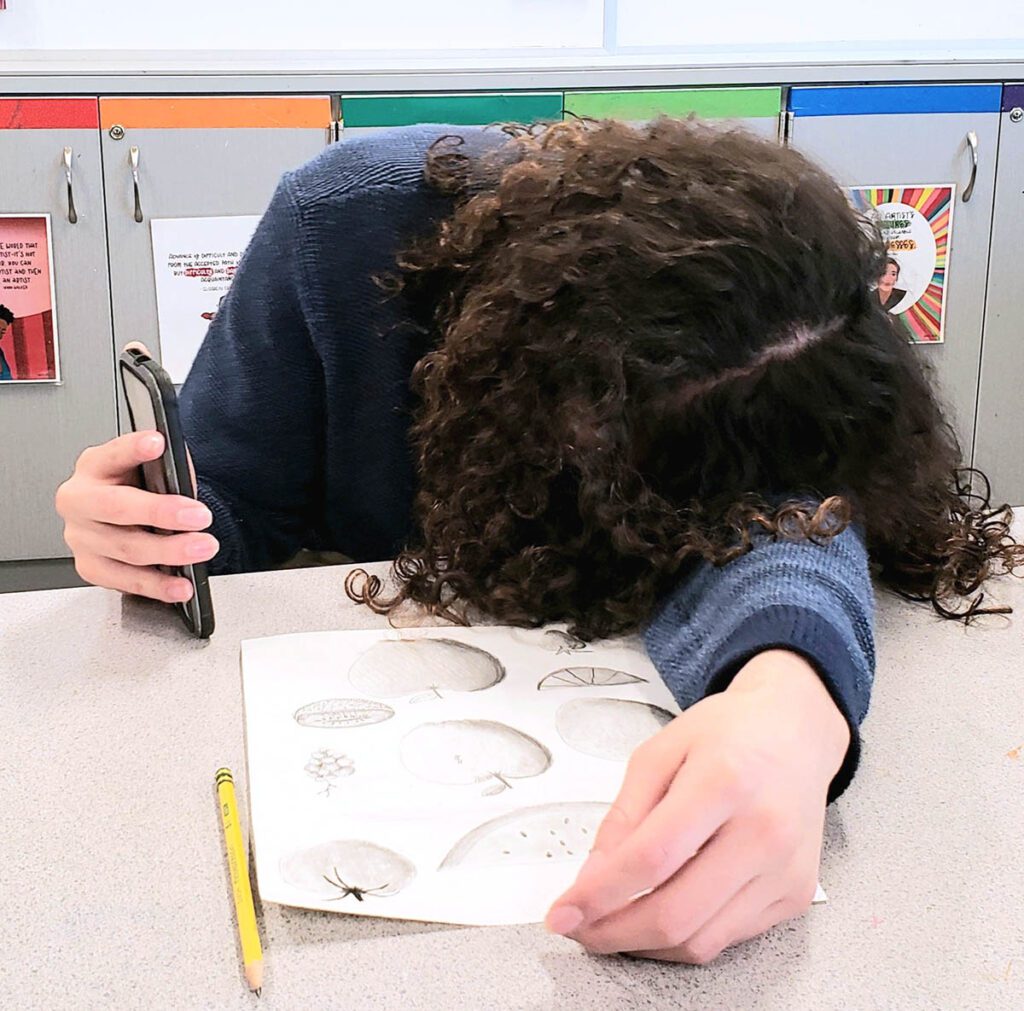
1. Student Misbehavior
Art teachers love their students. However, if you’ve been a teacher since before the pandemic, you know it has greatly impacted student behavior and social-emotional development. Teachers are seeing students recover from the social impact, but many are still struggling. Quite a few students show apathy in school, addiction to their electronics, short attention spans, and limited social-emotional skills. Let’s take a look at a few of these!
Excessive Screentime
Have you noticed your students lose focus and give up more quickly than in previous years? You’re not alone! Many art teachers struggled to retain their students’ attention and get them to follow through on assignments with good faith effort. Give students a choice or opportunity, and they tend to turn to their screens as a way to cope with difficulties and escape the mental stress of school. In fact, Gen Z spends about 9 hours a day on their devices!
Chicago high school art teacher Janet Taylor shares how she was able to engage her students and draw them off their screens and back to artmaking:
- Break tasks down into small bites.
This prevents students from becoming overwhelmed and mentally checked out. It gives easy wins throughout the class period and a sense of accomplishment! - Emphasize choice in the curriculum.
Giving students choices increases engagement and encourages them to choose art over their screens. It allows them to select things that interest them. - Understand student needs.
When students feel understood, electronics become less of a power struggle. Students (even teenagers!) still aim to please, especially teachers they like and respect.
Poor Craftsmanship
You aren’t alone if you feel like some students just don’t care about creating high-quality, finished artwork. Many students struggle to understand why they need to cover the entire paper or canvas, not fold their artwork, or turn in more than a sketch.
Jackie Meyers, a fourth through sixth-grade art teacher in Oklahoma, found these two approaches helpful to combat her students’ apathy:
- Emphasize experimentation over finished products.
Lead students through experimentation with materials and art tools instead of focusing on quality and completing projects. This allows students to review proper techniques and skills without the pressure of creating large-scale artwork. - Show contemporary art.
Analyze artwork from current artists alongside artwork from their sketchbooks. Ask them if they notice any rips, folds, or uncovered canvas. Students will be more invested if they see examples of finished artwork with relevant subject matter.
Lack of Social-Emotional Skills
This year, many art teachers noticed their students struggling socially due to the after-effects of the pandemic. Thinking and acting independently and collaboratively is difficult!
Elementary and middle school art teacher Mariana VanDerMolen incorporated these elements to help her students develop their social and emotional skills:
- Incorporate visual journaling with a social-emotional focus.
Give your students visual journaling prompts to help them work through difficult emotions. Include social experiences in the art room so students can continue to develop those skills. If you’ve noticed this problem in your classroom, check out the Social-Emotional Learning in the Visual Arts course or the Social-Emotional Pack in PRO Learning. - Create low-risk collaborative experiences.
Students can feel pressure and anxiety when forced to collaborate for a grade. Design academic interactions to bolster their social skills without it impacting grades. Try think-pair-share, group brainstorming, and collaborative centers.
2. Substitute Teacher Shortage
Most schools have felt the impact of the national teacher and substitute shortage. Art teachers came together this year to develop creative solutions to keep schools functioning. Elementary art teacher Joshua Chrosniak’s school in Ohio combined classes and covered each others’ classes. While these are not ideal solutions, they allowed Josh to show his school administration and colleagues that art teachers are adaptable team players.
3. Chronic Absenteeism
Some students thrived with virtual learning during the pandemic. Coming back to face-to-face learning is a continual struggle for them. This year, schools continued to see the effects of the pandemic on student attendance numbers. When students are chronically absent, it’s hard to find the time to build relationships and get them to make up work.
North Carolina middle school art teacher Rebekah Hower resolved this problem by doing these two things:
- Flip key aspects of lessons.
Record short, easy-to-follow tutorials and post them to your digital classroom. This way, students who are absent can make up their work without taking up too much of your time during class. Students can even do their work at home if they want to! - Digitally organize and post lesson plans.
Organize lesson plans in your digital classroom by week and day. This way, students who are absent can easily find the lesson they missed according to the day they were absent.
4. Feelings of Inadequacy
First-year art teachers face several challenges. One prevalent issue is self-doubt. Even teachers who transitioned from teaching a different subject question whether or not they are good art teachers.
Texas elementary art teacher Meagan Cross transitioned to art after 16 years in kindergarten. She staved off feelings of inadequacy using these methods:
- Follow other art teachers on social media.
A simple way to see other art teachers’ methods is to find art teachers to follow on social media. Check out the Top 10 Inspiring Art Teacher Instagram Accounts to Follow to curate your list of inspirations. - Ask for student feedback.
If you ask, students will let you know what you’re doing well and suggest changes. Most of the time, feedback is incredibly encouraging, and students will remind you you’re on the right track.
5. Large Class Sizes
Putting on an art show when you have hundreds of students is a daunting task. Don’t worry! There are ways to celebrate each student’s artwork without sacrificing your sanity.
Instead of putting on one large art show, Meagan Cross came up with these creative experiences:
- Pair art shows with musical performances.
Instead of orchestrating an art show for your students by yourself, try pairing up with another teacher’s event. A great teacher to partner with is the music teacher. If they host performances for every grade level, ask to host that grade level’s art show at the same time and place. It can increase attendance and give you smaller, more manageable events. - Create an interchangeable gallery wall to display student artwork.
While wall size limits the amount of artwork you can hang up, find a wall where you can hang at least one piece per class at all times. Changing out the artwork once a week is more manageable compared to cramming artwork from every student on the wall after each project. If art shows were a struggle for you this year, check out this article to help you decide whether or not you really need one!
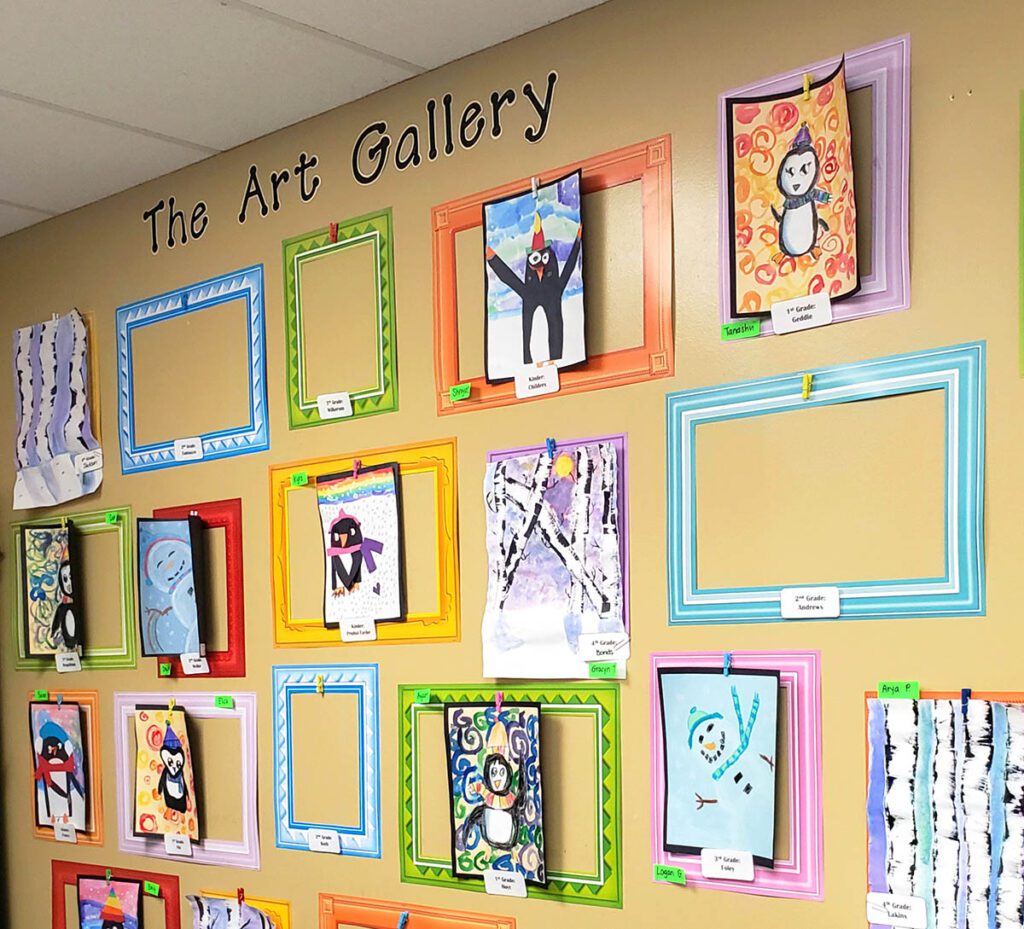
6. Small Classroom Space
If you have too many students crowding your tiny classroom, you aren’t alone! Another challenge for art teacher Meagan Cross was the lack of classroom space. If your students can barely move around the art room, design a more conducive artmaking environment for next year.
Meagan solved her small-classroom problem using these four methods:
- Get rid of all the “hoarded” items.
You or the art teacher before you may have collected a ton of potential art supplies. Prioritize the items you and your students will actually use in the next year. Find new homes for everything else! - Invest in stackable bins.
Storing and stacking supplies vertically will create more space. - Prep all of the supplies ahead of each class period.
Color-coordinate the tables and supply bins to minimize the number of times students get up to get supplies. Fewer students wandering means a less chaotic environment! - Avoid ordering too many supplies.
If you can space out supply orders, you can keep only what you need on hand.
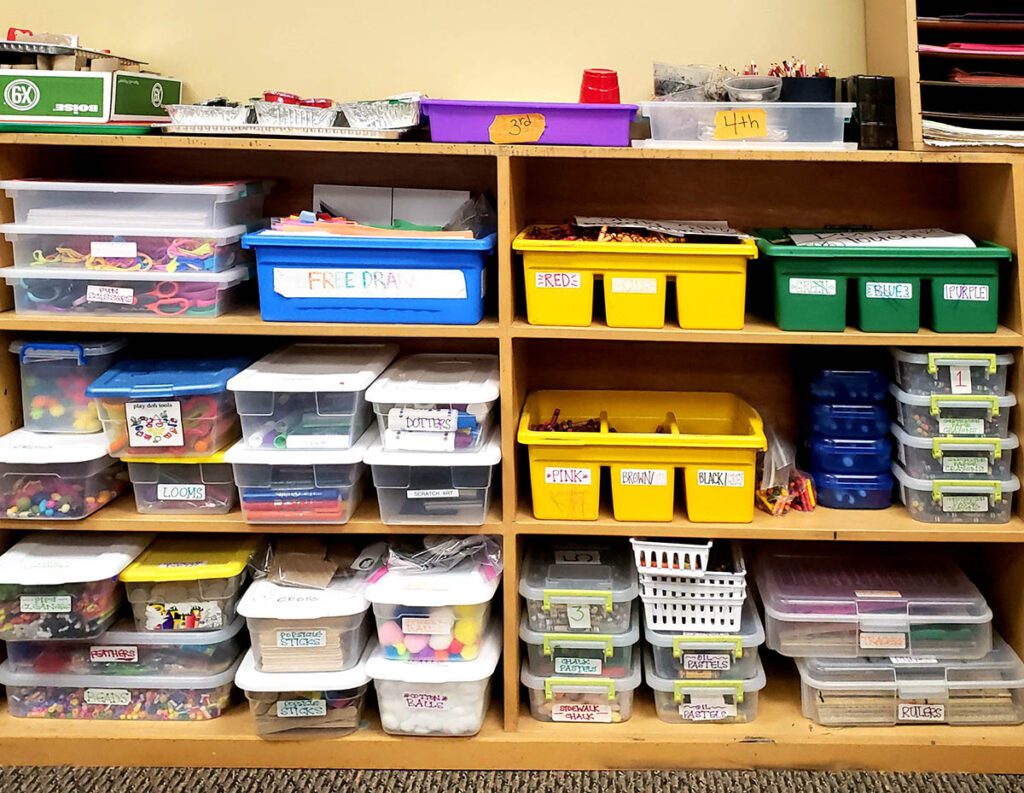
7. No Sink
The mess of the art room is a challenge even when you have easy access to water for cleaning supplies. It’s even more difficult not to have a sink in your art room at all!
Meagan Cross didn’t have a sink this year, but this is how she overcame the challenge:
- Keep two pitchers for cleanup.
Keep clean water in one pitcher for students to rinse supplies like paintbrushes. When the water is too dirty, dump it into the “dirty” pitcher and refill it with clean water. - Ask for donations of wipes and paper towels.
Baby wipes are expensive, but they make cleaning without a sink much easier. Put them on your teacher wish list and share it with parents and other stakeholders. - Have a cleanup caddy.
If you have dirty supplies and need more water to clean them than the pitcher can hold, put them in a caddy with a little water in the bottom. The water will prevent paint or other materials from adhering to the supplies until you can get to them later.
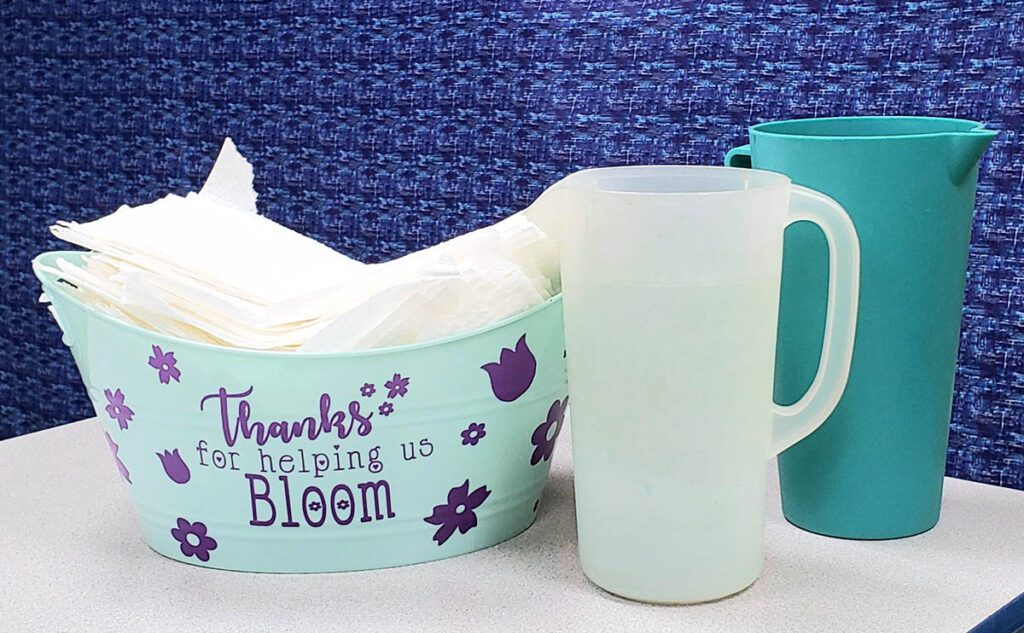
8. Loud Noise Levels
The art room is a place where teachers want students to relax and communicate with each other. However, sometimes the communication gets overwhelming and loud. When you’re overstimulated by the noise levels or have to keep it quiet for the classrooms next door, find a way to manage the volume.
Here are three ways teachers managed noise levels this year:
- Use ClassDojo’s voice meter.
Several sites have volume meters. They will alert you and your class when the volume is too high. - Review expectations and implement rewards.
Students need constant reminders of appropriate behavior, including voice levels. When simple reminders don’t work, try giving classes an incentive. - Use volume modes.
Pair verbal signals with visual reminders. Use the analogies of movie theatre mode (no talking), restaurant mode (soft talking), coffee shop mode (small talk), and supermarket mode (friendly conversation).
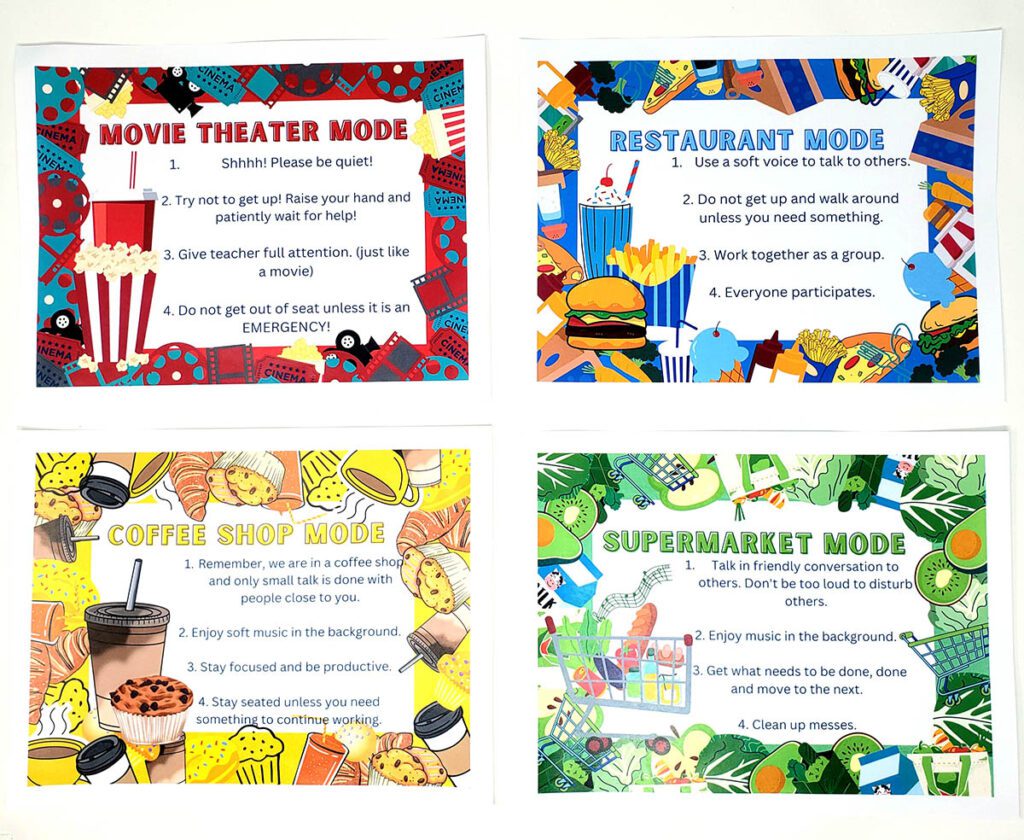
While the challenges this year were daunting, art teachers faced them head-on. They addressed students’ behavior by building relationships, integrating choices, and shifting gears on projects. Many art teachers made sacrifices to deal with the shortage of substitute teachers, and others created flipped classrooms to help students with frequent absenteeism. New teachers fought off feelings of inadequacy by looking at veteran art teachers for advice and inspiration. Even having challenging behavior issues and no sink in the art room didn’t stop art teachers from thriving this year! Art teachers aren’t just creative when it comes to designing projects. Use these creative solutions next year to start the year strong!
What challenges did you face this year?
How did you creatively overcome problems in the art room?
Magazine articles and podcasts are opinions of professional education contributors and do not necessarily represent the position of the Art of Education University (AOEU) or its academic offerings. Contributors use terms in the way they are most often talked about in the scope of their educational experiences.





